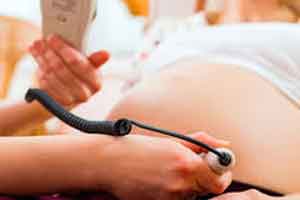- Home
- Editorial
- News
- Practice Guidelines
- Anesthesiology Guidelines
- Cancer Guidelines
- Cardiac Sciences Guidelines
- Critical Care Guidelines
- Dentistry Guidelines
- Dermatology Guidelines
- Diabetes and Endo Guidelines
- Diagnostics Guidelines
- ENT Guidelines
- Featured Practice Guidelines
- Gastroenterology Guidelines
- Geriatrics Guidelines
- Medicine Guidelines
- Nephrology Guidelines
- Neurosciences Guidelines
- Obs and Gynae Guidelines
- Ophthalmology Guidelines
- Orthopaedics Guidelines
- Paediatrics Guidelines
- Psychiatry Guidelines
- Pulmonology Guidelines
- Radiology Guidelines
- Surgery Guidelines
- Urology Guidelines
Is continuous electronic fetal monitoring useful for all women in labor?

Electronic fetal monitoring is often used during labour to detect unborn babies at risk of brain damage (neonatal encephalopathy) from a lack of oxygen (hypoxia). In the UK, continuous monitoring is used only for women in high-risk labour, but should it be used for all women in labour? Experts debate the issue in The BMJ.
Obstetrics specialists, Edward Mullins and Christoph Lees, at Imperial College London say that failure to use continuous electronic fetal monitoring "amounts to a misguided blinding of the clinician to the clinical state of the fetus."
They argue that fetal monitoring trials have focused on uncommon outcomes, such as cerebral palsy, which is rarely linked to hypoxia during labour, and say "we should be focusing on other forms of evidence relating to the more common outcome with serious long term implications - namely, neonatal encephalopathy."
They point to research showing that continuous fetal monitoring is associated with lower early neonatal and overall infant mortality and they argue that intermittent auscultation (listening to a baby's heartbeat at regular intervals) "is not based on a thorough assessment of the evidence."
They acknowledge that electronic fetal monitoring increases the rate of instrumental delivery (such as use of forceps) and caesarean section, but argue that increased intervention "may not be entirely undesirable, given that appropriately timed intervention is likely to avoid neonatal hypoxia, seizures, and perinatal death."
"We do not serve low risk unborn babies well and are possibly committing up to 800 every year in the UK to neonatal encephalopathy and its largely avoidable sequelae," they write. "It requires a brave stance, however, to reverse the deliberate demedicalisation that clouds this debate."
But Peter Brocklehurst, Professor of women's health at Birmingham Clinical Trials Unit, says "the more we use electronic fetal monitoring, the more harm we do, with little evidence of benefit."
He argues that "most of the fetuses identified as being at risk of hypoxia are not" and highlights a review of trial data for nearly 37,000 women that found no difference in perinatal mortality between labours with electronic fetal monitoring versus intermittent auscultation. Neonatal seizures in the fetal monitoring group was lower than in the intermittent auscultation group.
Electronic fetal monitoring increases the risk of women having a caesarean section, which is not a benign operation, he writes. Given that electronic fetal monitoring does not prevent perinatal deaths, "the excess of subsequent deaths caused by the increased risk of caesarean section is a major concern."
He points out that babies still die or are damaged because of intrapartum hypoxia and that focusing entirely on the fetal heart rate without taking account of other relevant risk factors "may create a lack of situational awareness and lead to adverse outcomes."
He believes we should not extend the use of electronic fetal monitoring to women at low risk, nor should we continue to use it as often as we currently do. "Limiting the use of electronic fetal monitoring to the very highest risk labours may be justifiable, but even then the balance of benefits and harms is uncertain," he adds.
Instead, he calls for other ways of monitoring fetal well-being during labour. For example, using new technologies to identify more reliable fetal biomarkers of hypoxia.
In the meantime, "pressure continues from those with vested interests to increase the use of electronic monitoring," he writes. "Clinicians should act in the best interests of both the women and the fetus under their care. Routine use of electronic fetal monitoring is not in the best interests of either."

Disclaimer: This site is primarily intended for healthcare professionals. Any content/information on this website does not replace the advice of medical and/or health professionals and should not be construed as medical/diagnostic advice/endorsement or prescription. Use of this site is subject to our terms of use, privacy policy, advertisement policy. © 2020 Minerva Medical Treatment Pvt Ltd